Outside the Wire - Photographs from Afghanistan
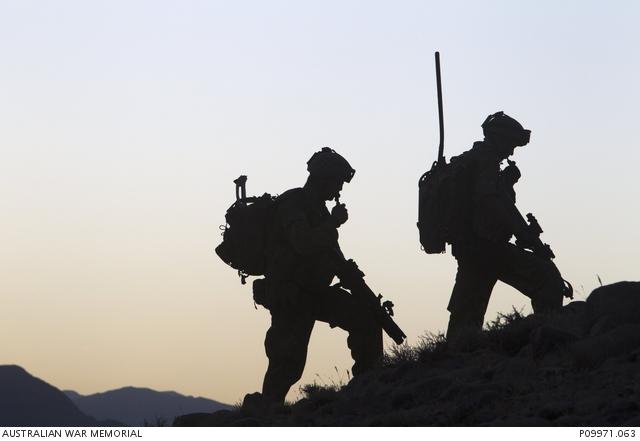
Two soldiers returning from patrol to Patrol Base Razaq.
The AWM has recently acquired a significant set of photographs taken by photographer Gary Ramage in Afghanistan in 2010. Photographs such as these, of Australian Defence Force personnel on patrol ‘outside the wire’ in Afghanistan, are a first for the AWM.
For visiting media, commissioned artists and photographers, the ADF generally permit only a few days on the ground, usually in the relative safety of established bases, and they are escorted at all times by an officer from Defence Public Affairs. These measures help protect the safety of the visiting journalist and our ADF troops, but limit access to the work the ADF is doing in the more remote areas of Uruzgan Province.
The newly formed Mentoring Team Delta (MT-D), as part of the ADF 1st Mentoring Task Force (MTF-1), began operations in the Deh Rawood Valley Region (otherwise known as the Deh Rawood Green Zone), approximately 60km west of Tarin Kowt in July 2010. Key to these operations was the mentoring of the Afghan National Army 4th Brigade, 205 Corps.
The Company was based at Patrol Base Razaq, its first priority being the movement of stores, equipment and supplies, and the establishment of security points. Ramage accompanied MT-D on several patrols in the Deh Rawood region focussing on the crucial task of clearing Improvised Explosive Devices (IEDs) from the area.
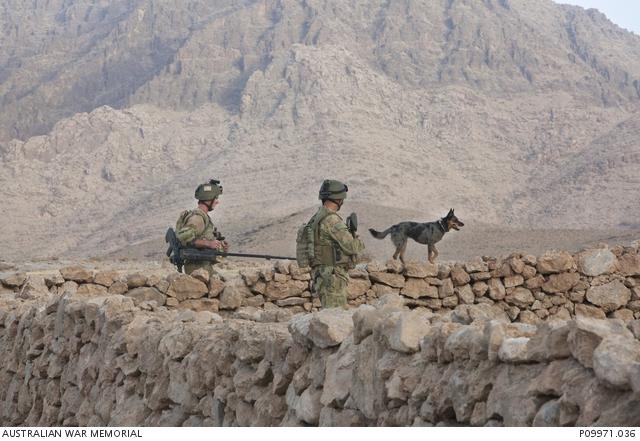
Members of MT-D, and their explosive detection dog, clearing the area of IEDs.

Previously a member of 6RAR, and a long serving military photographer with the ADF’s 1st Joint Public Affairs Unit, Ramage is afforded the freedom that many other photographers aren’t when in Afghanistan. As such, we are given a rare insight into the harsh and primitive living conditions experienced by Australian personnel at remote base locations.
Mentoring Team Delta made their way from Tarin Kowt, to Patrol Base Razaq via an overnight stop at Forward Operating Base Hadrian. You can see in this small series, the rough sleeping conditions endured by the unit; wedging themselves between the fortified HESCO wall and the solid bulk of their bushmaster patrol vehicles.
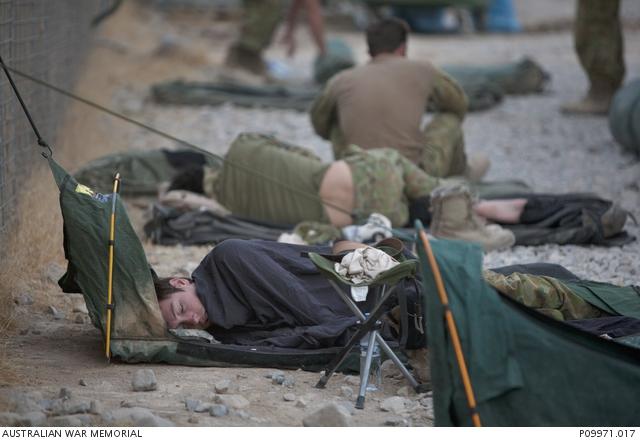
Overnight accommodations at Forward Operating Base Hadrian.

En route to PB Razaq via an overnight stop at FOB Hadrian.
These photographs also show us the dangers that landscape and environment pose on Australian and Afghan troops. A single patrol route can cover ground that takes them from the sweeping, exposed landscape of the desert mountain ranges, to the dense, vegetation of the green zone in the lower valleys, each terrain posing differing threats and security risks. Patrols often pass through small villages and inhabited areas in the green zone, which is a rich agricultural area. The inherent vulnerability of the patrol group is emphasized by the backdrop of the towering mountain expanses.
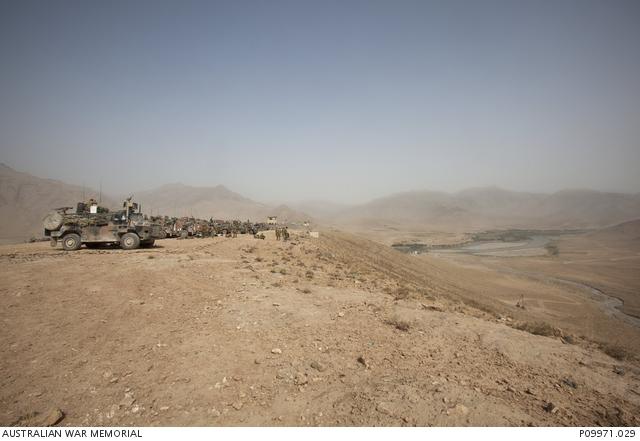
Looking over the Deh Rawood valley.

Patrol vehicles heading down into the valley from the patrol base.
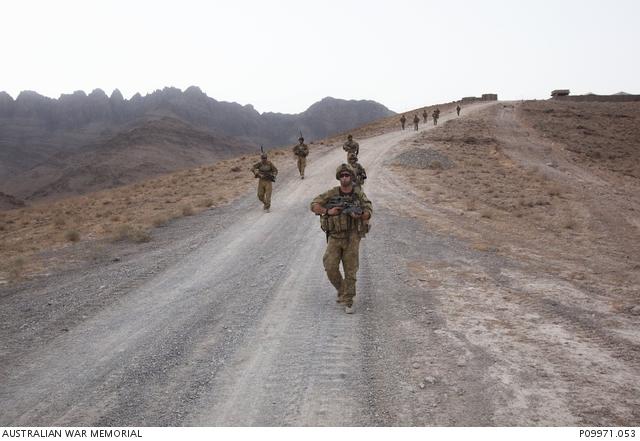
A patrol leaving Patrol Base Razaq.

Patrolling the fertile 'green zone'.
Between June and August 2010, whilst Ramage was in Afghanistan, MTF-1 was to suffer the deaths of 6 of its members, several from IED explosions and one in the Battle of Derapet. This collection of images puts into perspective the conditions faced by ADF troops in Afghanistan every day and we get an insight into how troops on the ground cope with and commemorate the loss of their comrades.
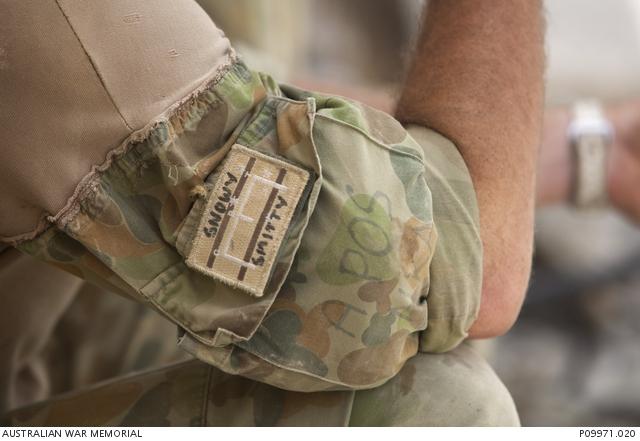
Commemoration to sappers Snowy and Smitty.
Gary Ramage served 20 years with the Australian Army and was the chief photographer when he left. He is now Chief Photographer for News Limited at the National Press Gallery in Canberra. He travelled to Afghanistan independently.
This acquisition will greatly enhance the Memorial’s growing collection of material related to current conflicts. You can view the photographs on the Memorial's website.